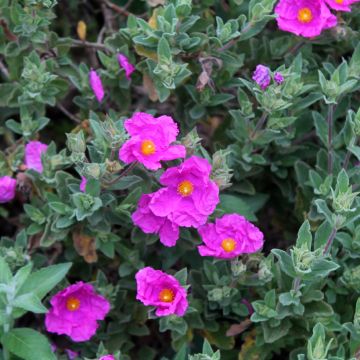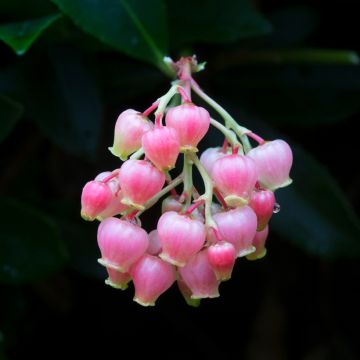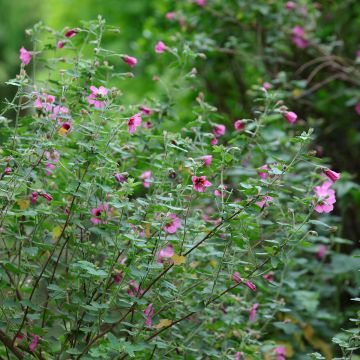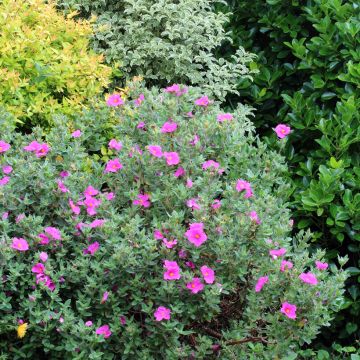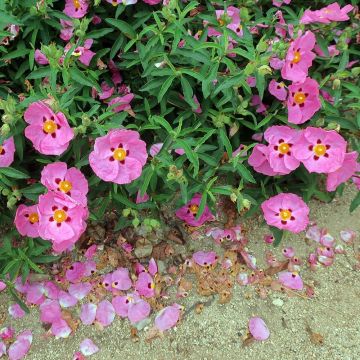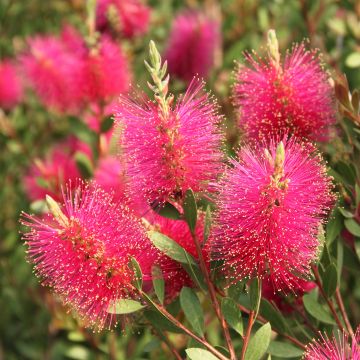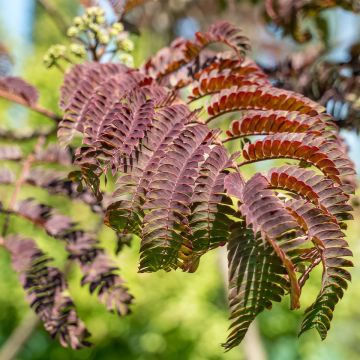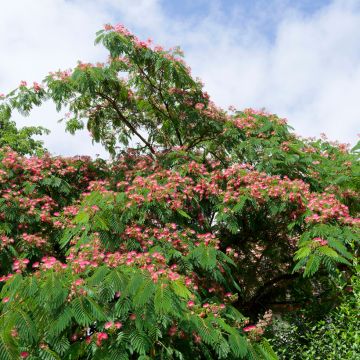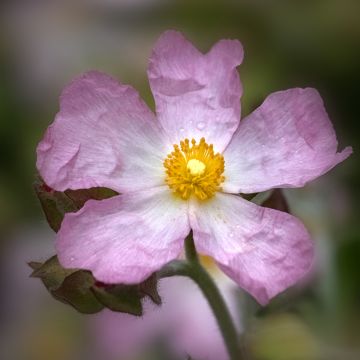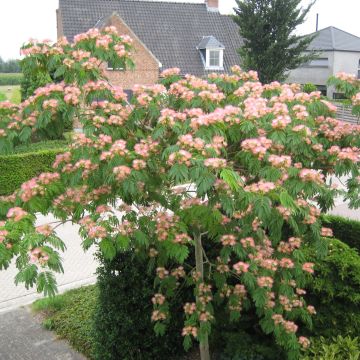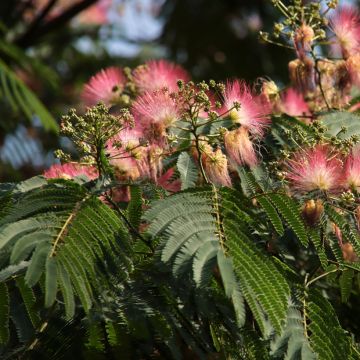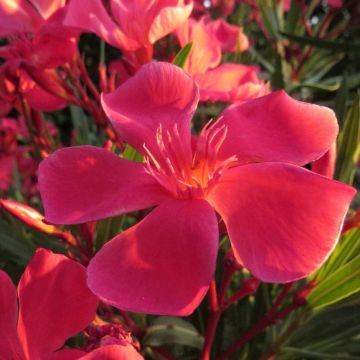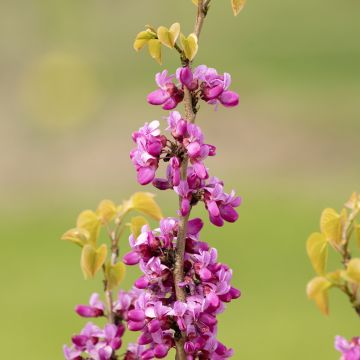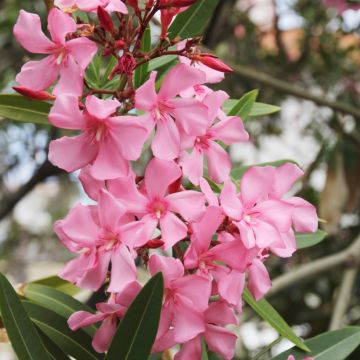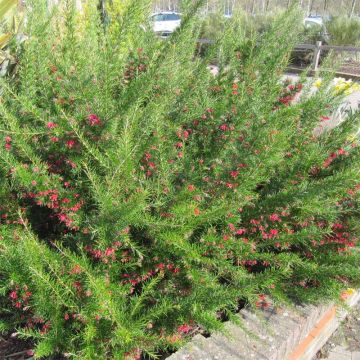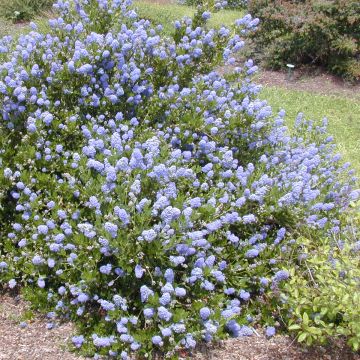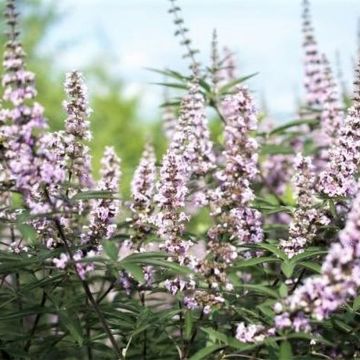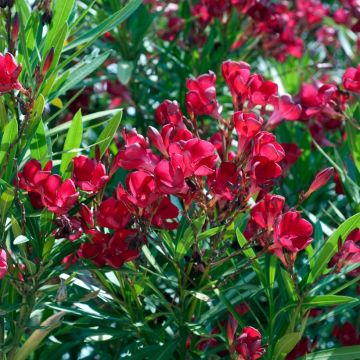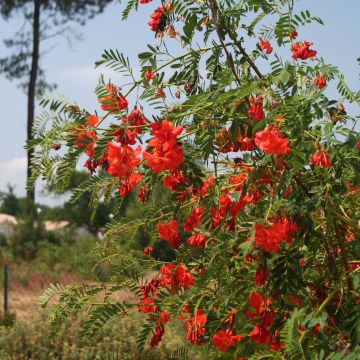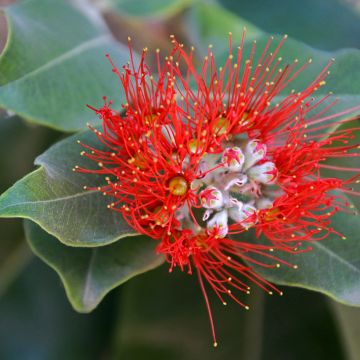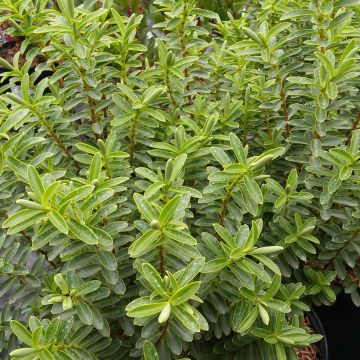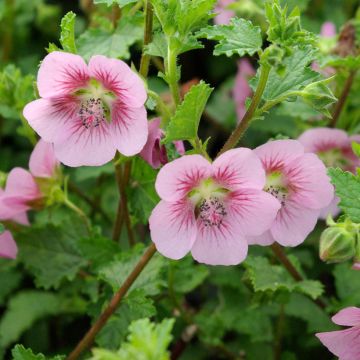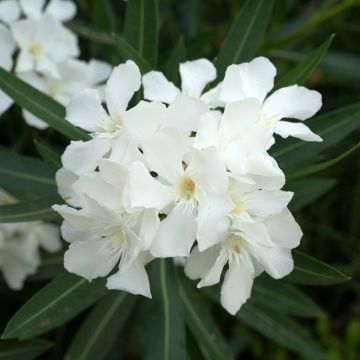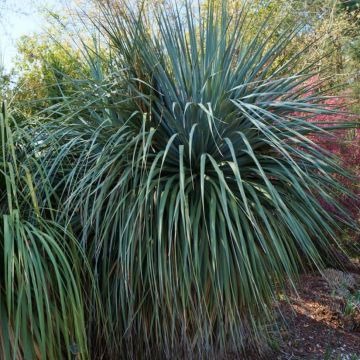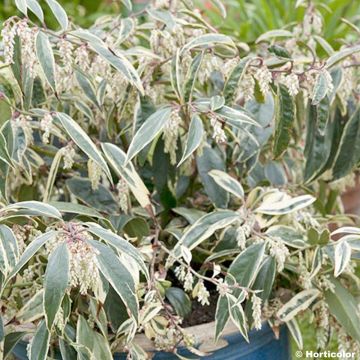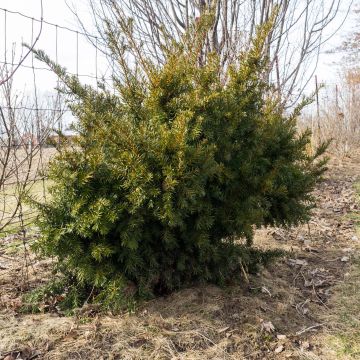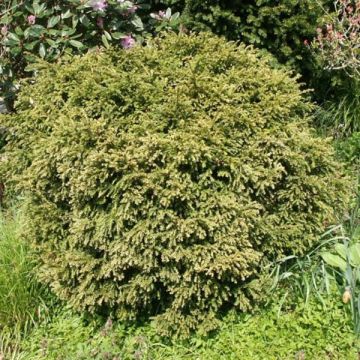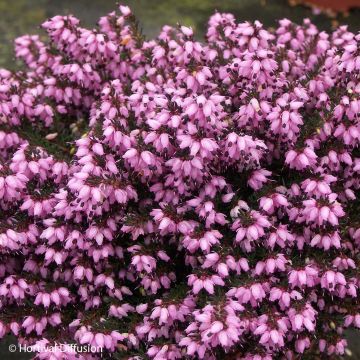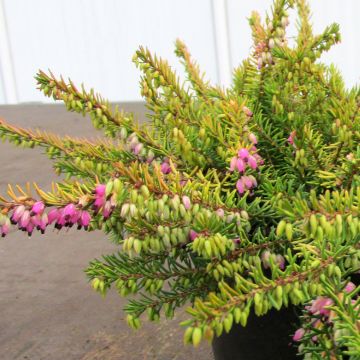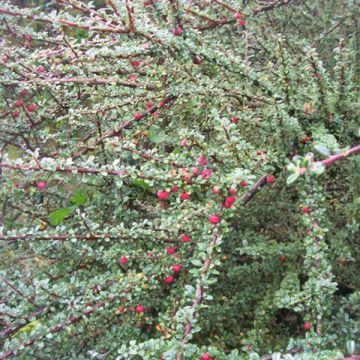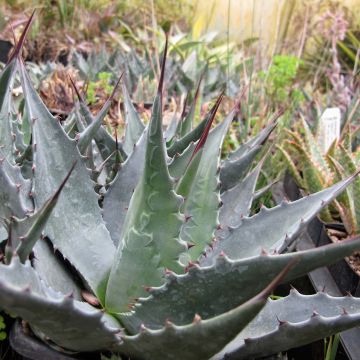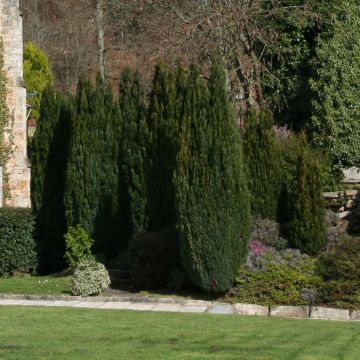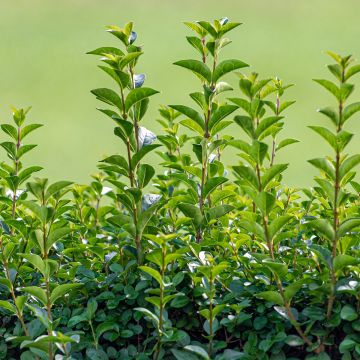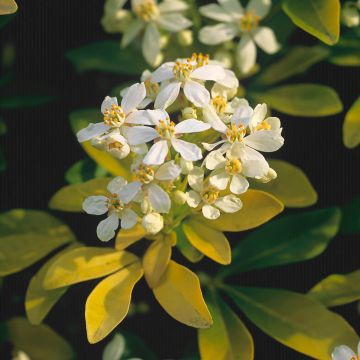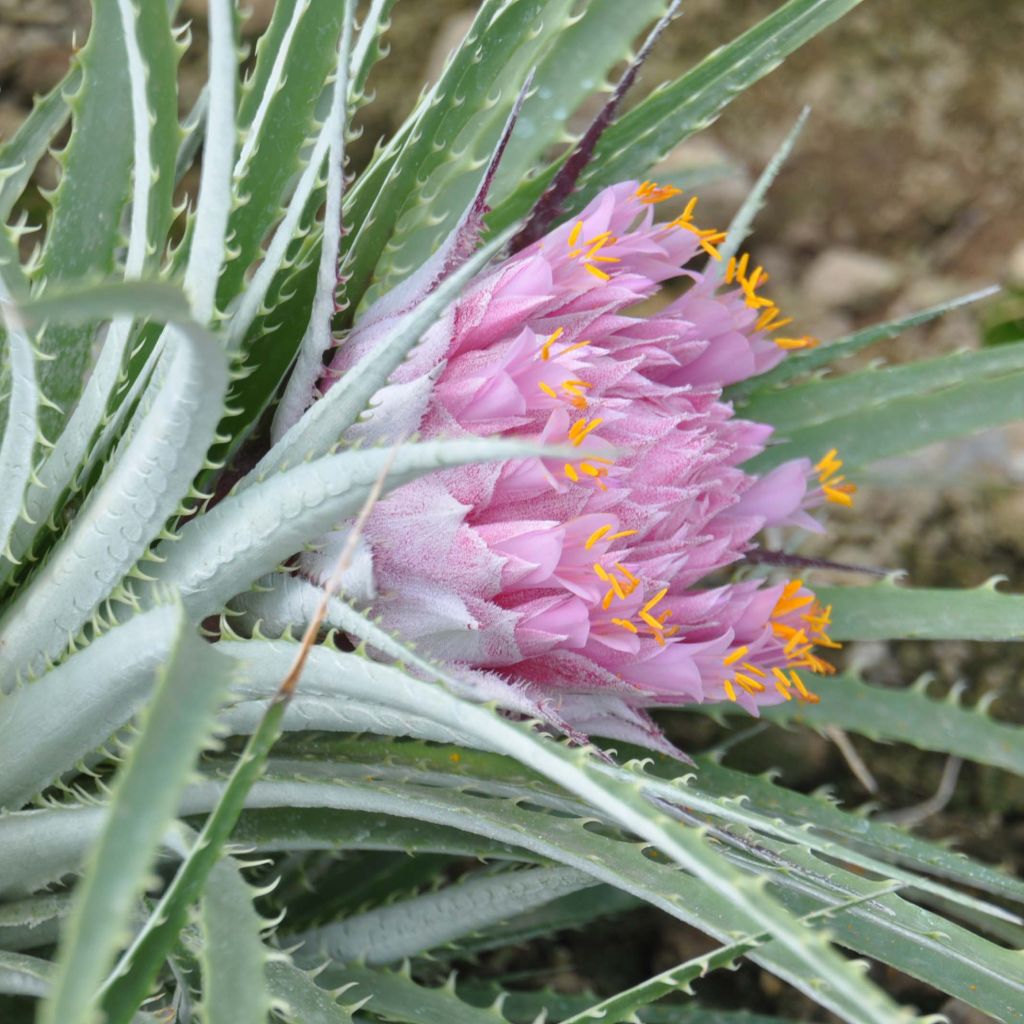

Ochagavia carnea
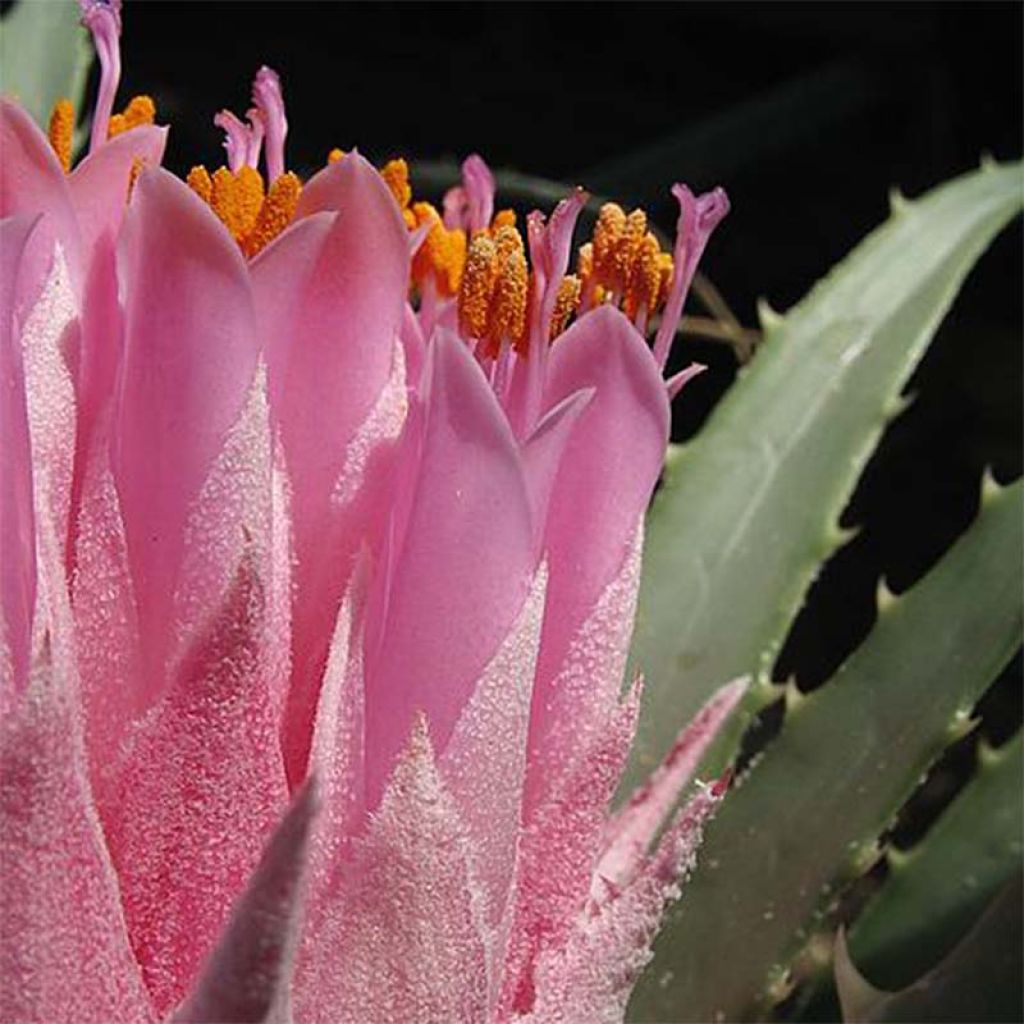

Ochagavia carnea
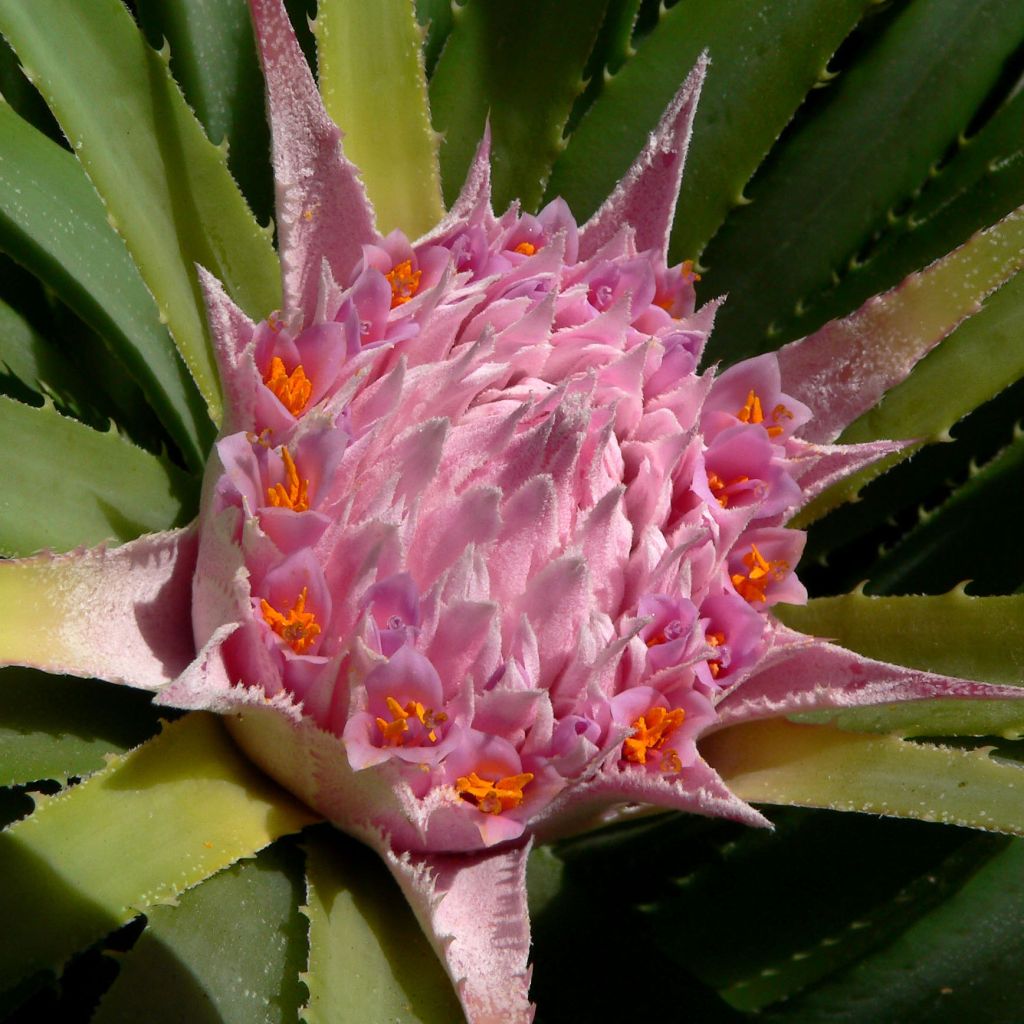

Ochagavia carnea
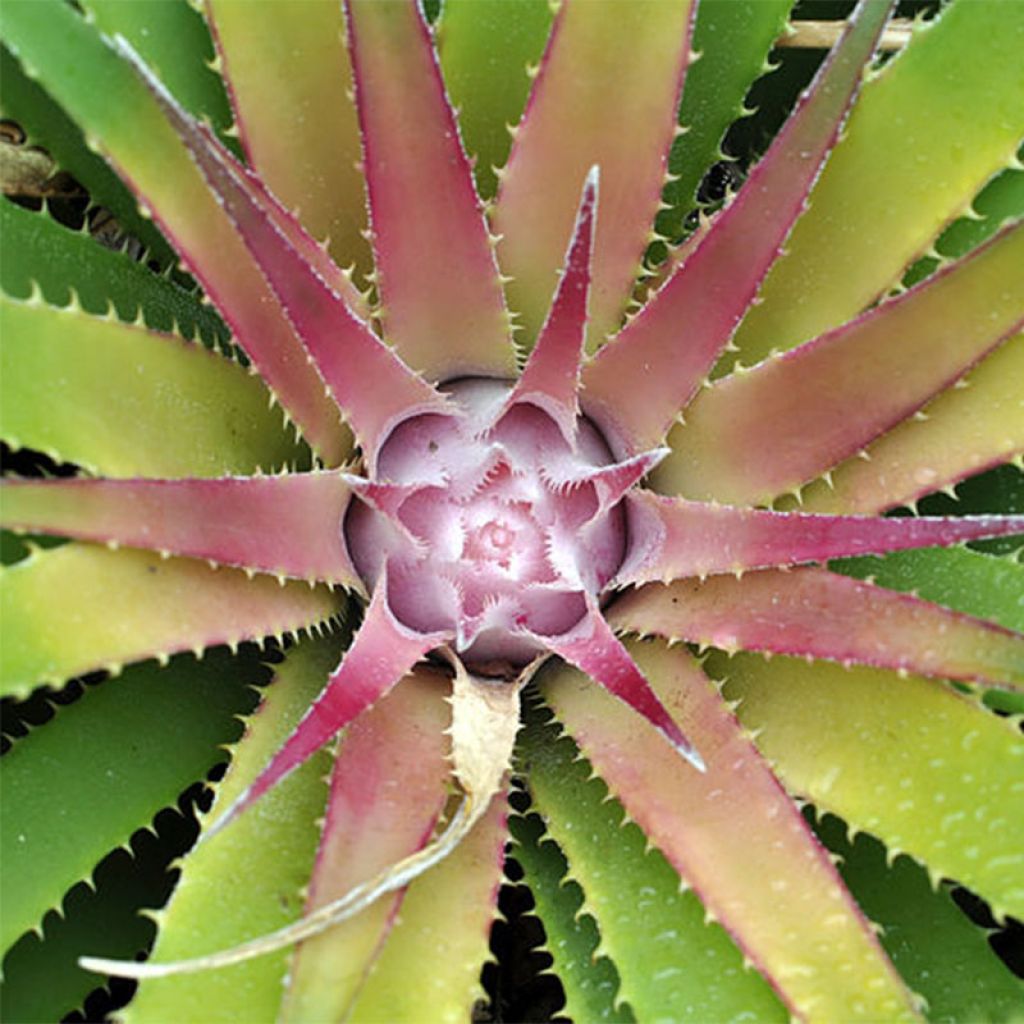

Ochagavia carnea
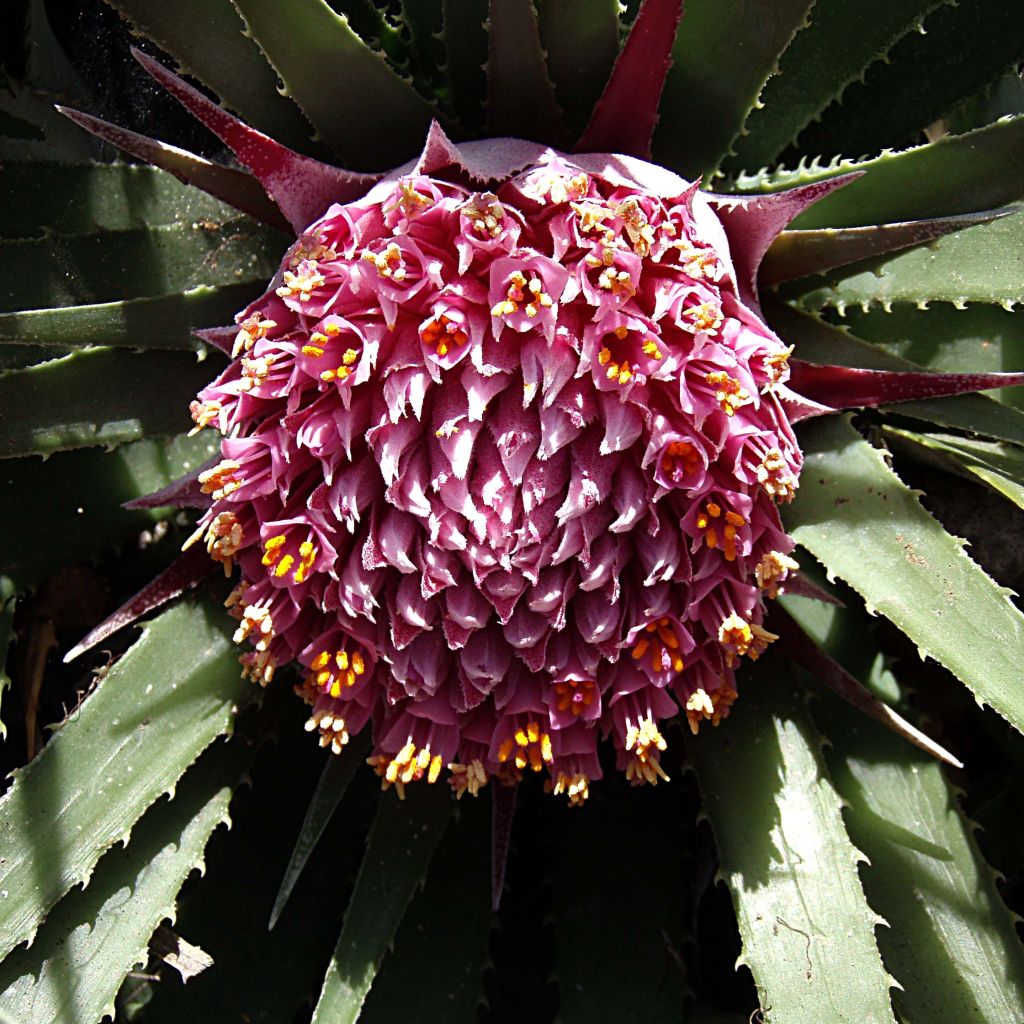

Ochagavia carnea
Ochagavia carnea
Ochagavia carnea
Tresco
Why not try an alternative variety in stock?
View all →This plant carries a 24 months recovery warranty
More information
We guarantee the quality of our plants for a full growing cycle, and will replace at our expense any plant that fails to recover under normal climatic and planting conditions.
From €5.90 for pickup delivery and €6.90 for home delivery
Express home delivery from €8.90.
Does this plant fit my garden?
Set up your Plantfit profile →
Description
The Ochagavia carnea, or Ochagavia litoralis for some botanists, is a fascinating and unusual plant, genetically very close to the pineapple, sought after for its wonderful summer flowering in pink. With a globular shape, its spectacular inflorescence is composed of many small flowers surrounded by tough bracts of the same fresh pink. It takes several years before it blooms, in the center of a dense, compact rosette composed of long leaves of a grayish green colour bordered with spines. While it offers only relative resistance to cold, up to -7°C (19.4°F) even in well-drained soil, the cultivation of this strange perennial is not difficult and it performs very well in pots. In our mild Mediterranean or oceanic regions, give it a small place in the rock garden, in a light soil like cactus soil, very well-drained, even occasionally dry in summer, and give it a sunny to semi-shaded exposure.
The Ochagavia carnea is a perennial evergreen terrestrial and xerophytic plant of the Bromeliaceae family, which includes among its members many other epiphytic species, these air girls named Guzmania, Vriesea, Billbergia or other Tillandsia. This rosette-shaped plant is native to central Chile, which has a Mediterranean-type climate, but tempered by altitude (between 500 and 2000m (1640 and 6562ft)) which guarantees cool nights. In its country of origin, it anchors its roots in south-facing rocky outcrops, on the more watered and less sunny slopes of the Andes, sheltered under a light canopy.
The Ochagavia carnea slowly forms a cluster of spreading rosettes, wider than tall, 40 to 60 cm (16 to 24in) tall and 50 to 70 cm (20 to 28in) wide. It is composed of a multitude of alternate, long and slender, tough and thick leaves, slightly arched, bordered on each side by curved spines. They are covered with a bloom that gives them a more or less gray colour. Flowering takes place in late summer, on mature plants. In the center of the rosettes appears a large inflorescence organized in a globular head, carried by a very short peduncle. The head is composed of many small tubular flowers with 3 petals in a pink-blue colour and 6 bright orange stamens, surrounded by a collar of tough, toothed bracts that resemble pink leaves. The flowers open from the periphery of the head towards the center. They are followed by the formation of green seeds, which are difficult to germinate.
This beautiful bromeliad is a collector's plant that will appeal to enthusiasts of unusual plants. It is easily cultivated on a terrace, where it will reign in a large pot filled with fresh cactus soil, to be stored in the greenhouse or conservatory to protect it from severe frosts. In the ground, in our mildest regions, it will find its place in a rock garden, above a wall, or in a gravel bed with other very exotic-looking plants such as Aloe polyphylla, Scilla peruviana or the extraordinary turquoise-flowered Puya berteroniana. In hot and dry climates, it can be planted for example on a neutral-colored mulch or planted among large rocks in a semi-shaded rock garden in a protected location, with some generous but spaced watering to improve its appearance and promote beautiful flowering.
Report an error about the product description
Ochagavia carnea in pictures
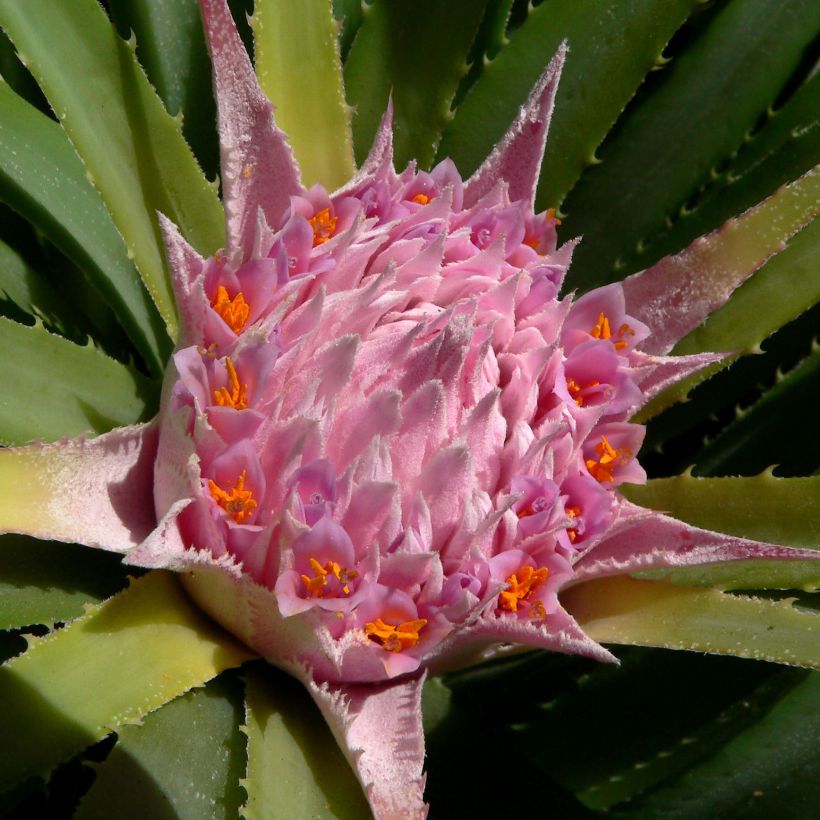

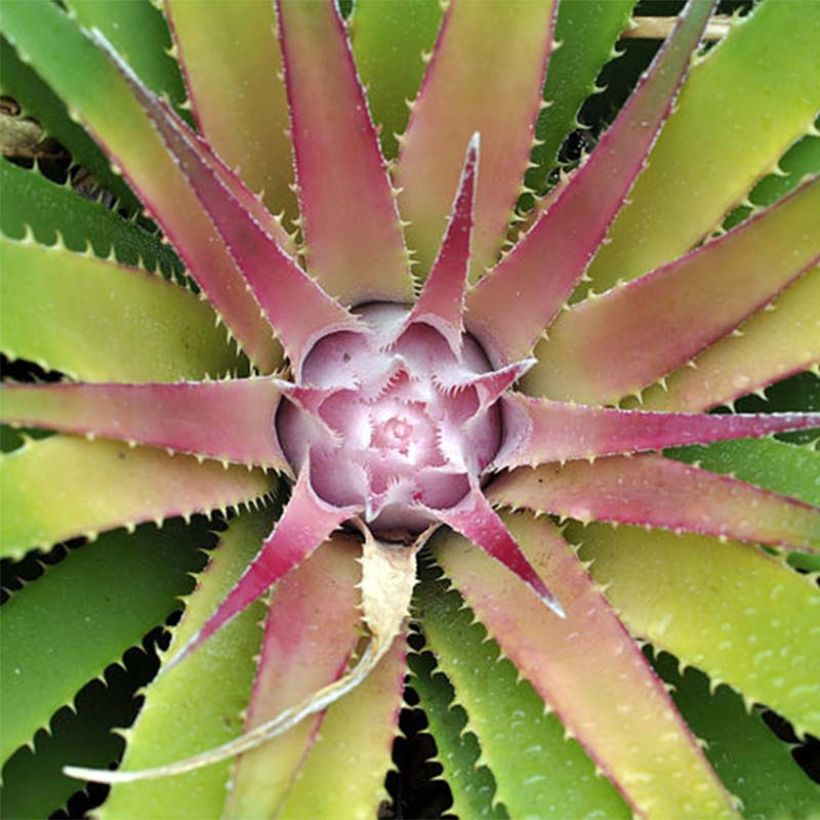

Plant habit
Flowering
Foliage
Botanical data
Ochagavia
carnea
Bromeliaceae
Tresco
South America
Other Mediterranean shrubs
Planting and care
Ochagavia carnea is easily cultivated in a pot, in a cactus-type substrate, which will be stored in winter to protect it from heavy frost. The plant shows slow growth, but becomes magnificent when allowed to invade a large pot. Sometimes it takes 4 or 5 years before its first flowering. Once bloomed, the rosette at the base of the flower stem dies naturally, no need to panic, numerous shoots ensure the plant's longevity. Due to its limited root development, it doesn't necessarily require a large container, except for aesthetic and overall balance. Watch out for the appearance of scale insects, especially in greenhouses or conservatories.
Prefer a very well-drained and light, humus-rich, coarse substrate that is not too chalky. A mixture of river sand, light garden soil, and leaf compost will work well. It appreciates regular watering. The soil should not completely dry out between each watering in summer, but only on the surface. In winter, when the temperature drops below 5°C (41°F), watering should be spaced out, the substrate must dry out between each watering.
The cultivation of this Ochagavia carnea can be attempted in open ground all year round, in our mildest regions of the Mediterranean or Atlantic coast, in a very well-drained, poor, and light soil, enriched with coarse sand or gravel. Some plants have apparently survived frost of around -7°C (19.4°F) in dry soil. A plant protected from rain in winter, for example by a roof, will withstand the cold better. It appreciates a bright, but not scorching, exposure especially in hot climates. Capable of withstanding drought, this bromeliad appreciates regular but spaced out watering in Mediterranean climates and dreads heatwaves. In oceanic climates, let nature take its course.
Multiplication by separation of rooted rosettes in spring.
Planting period
Intended location
Care
This item has not been reviewed yet - be the first to leave a review about it.
Evergreen shrubs
Haven't found what you were looking for?
Hardiness is the lowest winter temperature a plant can endure without suffering serious damage or even dying. However, hardiness is affected by location (a sheltered area, such as a patio), protection (winter cover) and soil type (hardiness is improved by well-drained soil).

Photo Sharing Terms & Conditions
In order to encourage gardeners to interact and share their experiences, Promesse de fleurs offers various media enabling content to be uploaded onto its Site - in particular via the ‘Photo sharing’ module.
The User agrees to refrain from:
- Posting any content that is illegal, prejudicial, insulting, racist, inciteful to hatred, revisionist, contrary to public decency, that infringes on privacy or on the privacy rights of third parties, in particular the publicity rights of persons and goods, intellectual property rights, or the right to privacy.
- Submitting content on behalf of a third party;
- Impersonate the identity of a third party and/or publish any personal information about a third party;
In general, the User undertakes to refrain from any unethical behaviour.
All Content (in particular text, comments, files, images, photos, videos, creative works, etc.), which may be subject to property or intellectual property rights, image or other private rights, shall remain the property of the User, subject to the limited rights granted by the terms of the licence granted by Promesse de fleurs as stated below. Users are at liberty to publish or not to publish such Content on the Site, notably via the ‘Photo Sharing’ facility, and accept that this Content shall be made public and freely accessible, notably on the Internet.
Users further acknowledge, undertake to have ,and guarantee that they hold all necessary rights and permissions to publish such material on the Site, in particular with regard to the legislation in force pertaining to any privacy, property, intellectual property, image, or contractual rights, or rights of any other nature. By publishing such Content on the Site, Users acknowledge accepting full liability as publishers of the Content within the meaning of the law, and grant Promesse de fleurs, free of charge, an inclusive, worldwide licence for the said Content for the entire duration of its publication, including all reproduction, representation, up/downloading, displaying, performing, transmission, and storage rights.
Users also grant permission for their name to be linked to the Content and accept that this link may not always be made available.
By engaging in posting material, Users consent to their Content becoming automatically accessible on the Internet, in particular on other sites and/or blogs and/or web pages of the Promesse de fleurs site, including in particular social pages and the Promesse de fleurs catalogue.
Users may secure the removal of entrusted content free of charge by issuing a simple request via our contact form.
The flowering period indicated on our website applies to countries and regions located in USDA zone 8 (France, the United Kingdom, Ireland, the Netherlands, etc.)
It will vary according to where you live:
- In zones 9 to 10 (Italy, Spain, Greece, etc.), flowering will occur about 2 to 4 weeks earlier.
- In zones 6 to 7 (Germany, Poland, Slovenia, and lower mountainous regions), flowering will be delayed by 2 to 3 weeks.
- In zone 5 (Central Europe, Scandinavia), blooming will be delayed by 3 to 5 weeks.
In temperate climates, pruning of spring-flowering shrubs (forsythia, spireas, etc.) should be done just after flowering.
Pruning of summer-flowering shrubs (Indian Lilac, Perovskia, etc.) can be done in winter or spring.
In cold regions as well as with frost-sensitive plants, avoid pruning too early when severe frosts may still occur.
The planting period indicated on our website applies to countries and regions located in USDA zone 8 (France, United Kingdom, Ireland, Netherlands).
It will vary according to where you live:
- In Mediterranean zones (Marseille, Madrid, Milan, etc.), autumn and winter are the best planting periods.
- In continental zones (Strasbourg, Munich, Vienna, etc.), delay planting by 2 to 3 weeks in spring and bring it forward by 2 to 4 weeks in autumn.
- In mountainous regions (the Alps, Pyrenees, Carpathians, etc.), it is best to plant in late spring (May-June) or late summer (August-September).
The harvesting period indicated on our website applies to countries and regions in USDA zone 8 (France, England, Ireland, the Netherlands).
In colder areas (Scandinavia, Poland, Austria...) fruit and vegetable harvests are likely to be delayed by 3-4 weeks.
In warmer areas (Italy, Spain, Greece, etc.), harvesting will probably take place earlier, depending on weather conditions.
The sowing periods indicated on our website apply to countries and regions within USDA Zone 8 (France, UK, Ireland, Netherlands).
In colder areas (Scandinavia, Poland, Austria...), delay any outdoor sowing by 3-4 weeks, or sow under glass.
In warmer climes (Italy, Spain, Greece, etc.), bring outdoor sowing forward by a few weeks.

































